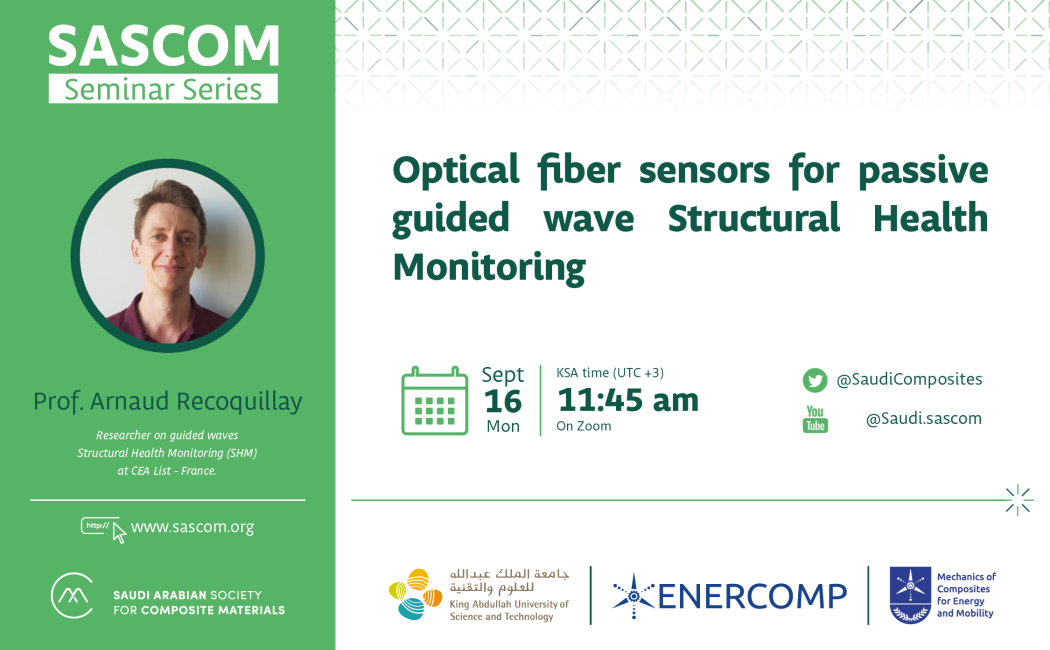Monday, September 16th, 2024
11:45 KSA time (GMT +3)
On ZOOM
Register Here
Optical fiber sensors for passive guided wave Structural Health Monitoring
By Prof. Arnaud Recoquillay
Researcher at CEA List – France.
Abstract
Structural Health Monitoring consists in assessing the health of a structure from sensors embedded in it during its use. Compared to more conventional nondestructive evaluations, it presents many advantages such as enabling to control hard to access part and move toward condition-based maintenance. However, such techniques also face challenges such as the need of sensors and methods with low intrusivity, able to work in the same conditions as the structure, which means potentially harsh conditions (extreme temperatures, radiations, explosive atmosphere…) and varying environmental and operational conditions (EOC). Indeed, conventional imaging methods use a baseline, i.e. a measured signal corresponding to the healthy state of the structure. In stable conditions, the subtraction of this baseline to the current signal allows to extract the defect signature and thus to image defects. However, in real conditions, EOC variations may have a greater effect than the defect in the obtained residual signals, masking it or inducing false alarms. Hence the need for robust monitoring methods.
We will present in this talk work done at CEA to enable ultrasonic guided wave-based structural health monitoring. It comprises three key ingredients: first, baseline free imaging methods have been designed to enable monitoring robust to environmental conditions. Guided wave tomography techniques in particular enable to evaluate the residual thickness of a structure and were proved to withstand temperature variations of several tens of Celsius degrees. Second, passive techniques relying on the measurement of ambient noise inherent to the use of the structure have been studied to avoid the need to emit ultrasonic waves in the structure, reducing the complexity of the electronics and the corresponding energy consumption, and take advantage of the noise which is otherwise an hindrance. Finally, optical fiber sensors and corresponding interrogation systems have been designed to meet the needs in terms of low intrusivity and harsh conditions. Furthermore, these sensors are not able to emit ultrasonic waves, making their coupling with passive techniques mandatory to obtain a system relying only on such sensors.
Bio
Dr. Arnaud Recoquillay earned his Ph.D. in Applied Mathematics from the University of Paris-Saclay in 2018. Since then, he has been conducting research on guided waves Structural Health Monitoring (SHM) at CEA List. His primary research focuses on developing robust guided wave imaging techniques that withstand various environmental and operational conditions, as well as exploring innovative methods involving optical fiber sensors. Additionally, he plays a crucial role in simulation efforts, coordinating the development of the SHM module for the CIVA platform.


